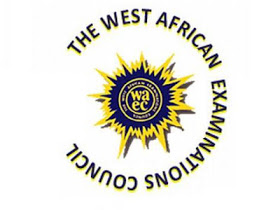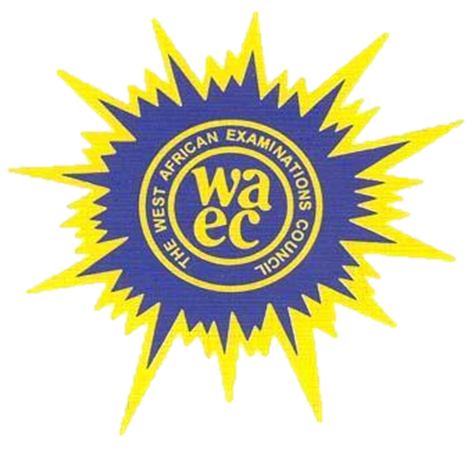NECO 2023 Financial Accounting Obj And Essay Answer – July/Aug Expo
WELCOME TO AYOSTUFFS BEST EXAM EVER
==================================
KEEP REFRESH THIS PAGE IN EVERY 5MIN
==================================
ACCOUNTING OBJ
1-10: CECAEBBDEC
11-20: BBAEAABDDC
21-30: ABEBEACDAC
31-40: AAAABBDAEB
41-50: CCCACBADED
51-60: BBADDCDDBC
*NECO ACCOUNTING ANSWERS*
======================================================
INSTRUCTIONS: Answer five (5) questions in all, Two (2) questions from section A, and Three (3) questions from section B.
======================================================
======================================================
*SECTION A*
(1a)
Bank Reconciliation Statement refers to a statement that reconciles the discrepancies between the balance reflected in a company's bank statement and the balance shown in the company's cash book at a given point in time. It is essential for businesses to reconcile their records with the bank's records to ensure accuracy and completeness of financial statements.
(1b)
(PICK ANY FIVE)
(i) Outstanding checks: A check may be recorded as paid in the cash book, however, it may not have been cleared in the bank statement.
(ii) Deposited/Un-deposited Funds: Funds from a customer can be deposited into the account but may not be recorded in the cash book. Similarly, funds from the businesses can be withdrawn from the account but may not be recorded in the cash book.
(iii) Un-recorded Bank Charges: Bank charges such as fees or service fees may not be recorded in the cash book.
(iv) Un-cleared Check: A check may be recorded as paid in the bank statement, however, it may not be recorded in the cash book.
(v) Bank Errors: Bank errors made by the bank or its staff can lead to discrepancies between the bank statement balance and the cash book balance.
(vi) Interest Earned: Interest earned from a bank account may not be recorded in the cash book.
(vii) Unrecorded Deposits: Deposits from customers may not be recorded in the cash book.
(viii) Unrecorded Loans: Loans taken from the bank may not be recorded in the cash book.
======================================================
(2i)
Error of principle: It occurs when a transaction is recorded in an incorrect account due to the violation of accounting principles. For example, if a company mistakenly records an expense as an asset, it would result in an error of principle.
(2ii)
Error of compensation: It is an error wherein a mistake in one account is compensated by a mistake in another account. When these two mistakes are combined, they cancel each other out and no effect will be seen on the financial statements.
(2iii)
Error of omission: It occurs when a transaction is not recorded in the accounting records. For example, if a company fails to record the purchase of a fixed asset, then it will result in an error of omission.
(2iv)
Error of commission: This error occurs when a transaction is recorded incorrectly. For example, if an invoice for $100 is mistakenly recorded as $1000, then it would result in an error of commission.
(2v)
Error of complete reversal of entries: It occurs when a transaction is recorded twice in the wrong accounts with opposite effects on the financial statements. For example, if a company mistakenly records a purchase transaction twice, first as a sale and then as a purchase, then it would result in an error of complete reversal of the entries.
======================================================
(3a)
(PICK ANY THREE)
(i) Donations: Non-profit organizations often rely on donations from individuals, corporations, and other entities to fund their activities. These can be in the form of cash, goods, or services.
(ii) Grants: Grants are awards of money or in-kind goods and services that are given to non-profits from state or federal government agencies, private individuals, or foundations.
(iii) Membership Fees: Membership fees are payments collected from members of the organization. These fees can be used to provide services to members or to fund operations.
(iv) Fundraising Events: Non-profits often hold fundraising events such as galas, auctions, and raffles to raise funds for their mission.
(v) Endowment Income: Endowments are investments made by the organization that can generate income over time.
(vi) Sponsorships: Non-profits may receive funding from companies or individuals who sponsor the organization’s activities. This allows the sponsor to get their name associated with the organization’s mission.
(3b)
(PICK ANY FIVE)
(i) Limited Information: The information provided by a receipt and payment account is limited and does not provide an understanding of the financial position of an organization.
(ii) No Reconciliation: A receipt and payment account does not reconcile the balance of the accounts.
(iii) No Audit Trail: A receipt and payment account does not provide an audit trail of transactions that can be traced back to the original source documents.
(iv) Lack of Analysis: A receipt and payment account does not provide detailed analysis of the organization's financial performance.
(v) Dual Entry System: A receipt and payment account is not a dual entry system since it does not require the entry of both debit and credit transactions for each transaction.
(vi) Unknown Balances: A receipt and payment account does not track the balances of individual accounts, so the actual balances are unknown.
(vii) Inaccurate Accounting: A receipt and payment account is prone to errors because it does not have the necessary controls to ensure accuracy.
(viii) Not Suitable for Auditing: Receipt and payment accounts are not suitable for auditing due to their lack of detailed information.
(3c)
(PICK ANY TWO)
(i) Personal Income Taxes: Personal income taxes are taxes that are imposed on earned income by individuals. All personal income taxes are collected by the federal government and used to fund the government’s programs and services.
(ii) Corporate Income Taxes: Corporate income taxes are taxes that are imposed on the net income of corporations. The federal government collects these taxes and uses them to finance the government’s spending.
(iii) Excise Taxes: Excise taxes are taxes imposed on certain goods and services, such as gasoline and cigarettes. These taxes are collected by the federal government and are used to fund programs and services.
(iv) Social Insurance Taxes: Social insurance taxes are taxes levied on all earnings of workers in the United States. These taxes are collected by the federal government and used to fund programs such as Social Security and Medicare.
(v) Customs Duties: Customs duties are taxes imposed on imported goods. The federal government collects these taxes to protect domestic producers and to generate revenue for the government.
======================================================
(4ai)
Source documents: Source documents are the original records that provide evidence of a business transaction. These documents include invoices, receipts, bank statements, purchase orders, sales orders, and contracts. Source documents are essential for recording transactions accurately and are used as the primary source of information for financial statements.
(4aii)
Debit Note: A debit note is a document that is used when a company receives goods or services that are not up to the agreed upon standards or have been charged incorrectly. The debit note is a request from the buyer to the seller to debit their account for an invoice that was incorrectly issued or for a return of goods or services that are not satisfactory.
(4aiii)
Prime Entry: Prime entry is a bookkeeping method used in double-entry accounting where transactions are entered first into an accounts ledger before being posted to the general ledger. This method allows businesses to review and analyse incoming data prior to posting to the general ledger, allowing for more accurate record keeping.
(4b)
(PICK ANY TWO)
(i) Scope: Government accounting covers all activities of the government while private sector accounting is focused on the transactions of one individual or business.
(ii) Regulatory Framework: Government accounting is governed by a complex set of regulations and standards while private sector accounting is regulated by industry standards.
(iii) Reporting: Government accounting requires annual reports to be provided to stakeholders while private sector accounting can provide more frequent detailed reports.
(iv) Objectives: Government accounting seeks to meet the public’s need for information regarding government activities while private sector accounting seeks to maintain financial viability.
(v) Structure: Government accounting is based on funds rather than departments while private sector accounting is based on departments.
(4c)
(PICK ANY TWO)
(i) Cash
(ii) Accounts Receivable
(iii) Inventory
(iv) Fixed Assets
(v) Accounts Payable
(vi) Salaries and Wages
(vii) Loans Payable
(viii) Equity Accounts




Comments
Post a Comment